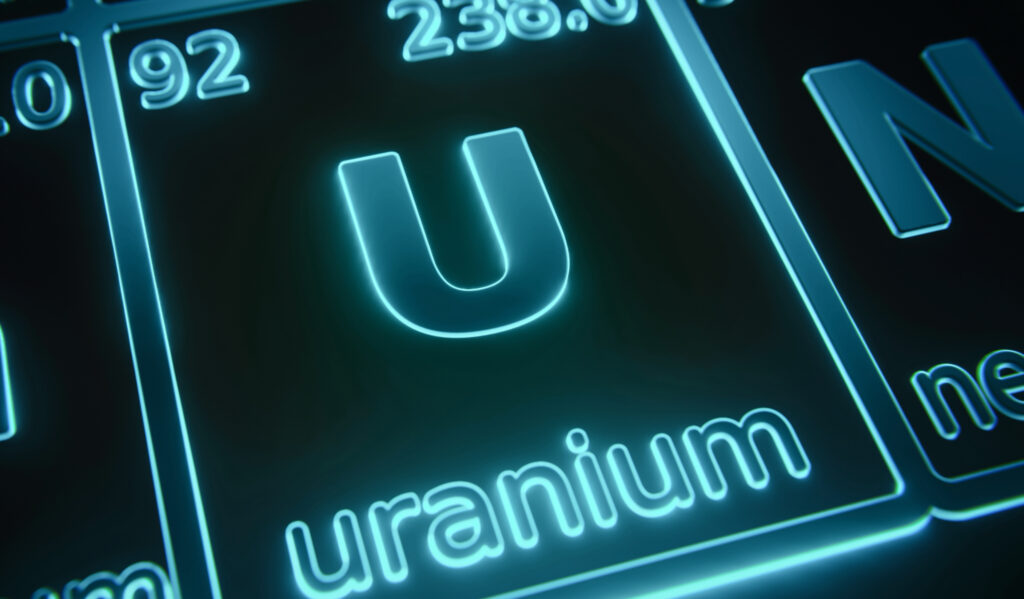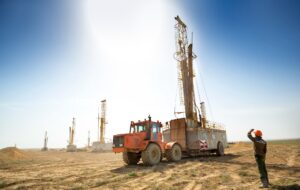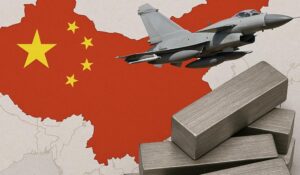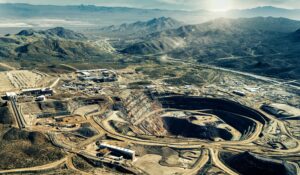Nuclear power is on track to hit record demand in 2025, but uranium — the fuel powering it — has seen prices fall from highs of US$107 in 2024 to US$63 in March 2025.
The supply crunch that helped drive prices up hasn’t magically disappeared, so what is happening and what comes next?

The path to US$107: fundamentals matter
In order to work out what’s coming next for uranium pricing, it’s essential to understand the some of the background and the fundamentals driving the market.
It may seem difficult to imagine after the consistently positive support in public sentiment and government policy we’ve seen in the last several years, but following the Fukushima nuclear accident in 2011, uranium prices collapsed and remained depressed for nearly a decade.
This led to significant underinvestment across the uranium mining industry — with total global production of uranium falling as much as 60% of the annual reactor fuelling requirements. The gap was only filled with secondary supplies and inventory drawdowns.
Major producers responded with supply management, for example, Kazakhstan’s state-owned Kazatomprom, the world’s largest uranium producer, cut production beginning in 2018, and Canada’s Cameco Corporation, the second-largest producer, suspended operations at McArthur River, the world’s largest high-grade uranium mine.
For a commodity like uranium, a ten-year bear market is catastrophic for long term production. It can take 10-15 years to build a uranium mine and while a few elite economic projects were able to make some progress towards development, overall supply, to put it politely, tightened — just as demand was about to soar.
And soar it did. The corresponding price increases for uranium and equities that occurred through to the end of 2024 were helped by astute moves by financial entities like the Sprott Physical Uranium Trust (SPUT) and Yellow Cake plc which, in 2021, began purchasing physical uranium and removing it from circulation. They now collectively hold a 66.2 million pounds of uranium.
To further complicate the sector, in 2022 Russia invaded Ukraine, upending global nuclear fuel markets. Sanctions, in particular America’s Prohibiting Russian Uranium Imports Act in 2024, forced Western utilities to seek alternatives to Russia’s uranium, conversion and enrichment industry, which historically had supplied approximately 35% of the US uranium market and has roughly 44% of the world’s uranium enrichment capacity
Subscribe for Investment Insights. Stay Ahead.
Investment market and industry insights delivered to you in real-time.
Demand
In the past few years the world has seen a remarkable nuclear renaissance.
We argue the pivotal year was 2022, marked by four major catalysts:
- Russia’s invasion of Ukraine in February 24, 2022
- the Inflation Reduction Act (IRA) enacted on August 22, 2022, with tax credits and financial incentives for nuclear reactors
- the launch of ChatGPT by OpenAI on November 30, 2022 kicked off the nuclear hyperscalers, tech giants like Microsoft, Google and Amazon, committing billions to nuclear power to fuel their energy-intensive AI data centers
- lack of meaningful progress at the climate conference COP27 on November 2, 2022 (and then, at COP28, more than 30 countries committed to tripling nuclear capacity by 2050)
A significant date preceding 2022 is March 2021, when China released its 14th Five-Year Plan, calling for a buildout of some 150 new nuclear reactors over the next 15 years. 30 reactors currently under construction, with another 194 planned or proposed across the country. For context, there are about 440 reactors operating today.
The West has also initiated a wave of reactor restarts and life extensions, with the extensions especially shifting the focus from simply replacing retiring plants to building cumulative demand growth.
The impact of growing nuclear capacity across the West is the wave of reactor restarts and life extensions, shifting the focus from simply replacing retiring plants to expanding cumulative growth.
For example, in the US, the Palisades Nuclear Plant in Michigan and the Three Mile Island plant in Pennsylvania leading the way; and Japan is in the process of restarting at least 13 reactors, where the new Industry Minister has called to “restart nuclear power, the safe one, as much as possible”
Then, in May 2025, US President Trump signed four executive orders overhauling the US nuclear energy sector by expediting reactor approvals, bolstering domestic uranium production, and integrate nuclear power into national security and AI infrastructure.

Tariffs
This year we’ve seen sweeping tariffs announced by the Trump administration that have had a significant impact on uranium prices.
(note, the tariff regime is extremely volatile and subject to change at any time)
So far, the tariffs and sanctions include:
- Russia: ban on unirradiated, low-enriched uranium (LEU) imports, with waiver options and quotas, and threat of 500% tariff on countries that import Russian uranium
- Canada: 10% tariff on uranium imports
- Mexico: 25% tariff on all imports, including uranium
- China: 55% tariff on imports, potentially including uranium; as well as a probe to stop China circumventing the Russian ban
- Kazakhstan: representing 43% of global uranium production, is at risk of secondary sanctions via China or Russia
And, in April, Trump has signed an Executive Order to investigate foreign-controlled critical mineral imports, including uranium.
This disruption and uncertainty has meant many utilities are holding back from buying, with, for example, US utility purchases of uranium dropping 50% after Trump announced a 10% tariff on imports from Canada, which supplies approx 27% of America’s nuclear fuel.
Spot vs Term Market divergence
While the spot price dropped to low a of US$63 in March 2025, driven by financial players such as traders and hedge funds, the term contract price remained relatively stable at around US$80/lb, pushed by producers supporting sustainable operations.
This divergence is atypical.
Only 11 million pounds of uranium was reportedly transacted in Q1 2025, a far cry from the annual global reactor demand for uranium estimated at approx 175 million pounds — and that’s on top of an 17 million pound shortfall in 2024 when utilities bought just two-thirds of the uranium needed to meet their forward requirements.
As we highlighted at the top, nuclear power demand is set to hit record levels this year.
At some point, the utilities will need to balance recent shortfalls to meet their long-term needs — and the price will move accordingly, and significantly.
And the longer the utilities hold off from buying, the smaller their uranium stockpiles become and the more vulnerable they are to price spikes. Considering the cost of shutting and restarting a reactor, utilities have no choice but to ensure they have enough fuel which means eventually, they will be forced back into contracting. If enough utilities return to the table when prices have already started rising, we could see commodity price spikes that dwarf even those of the last uranium bull market.

Uranium supply challenges and the coming squeeze
With nuclear demand growth increasingly set in stone — literally, as the foundations for new plants are poured — the core concern is supply as uranium production falls short:
- Kazatomprom the world’s largest and, arguably, most important uranium producer, representing 40% of global production in 2023 — is flashing red, with production 20% below total Subsoil Use Contracts level
- geopolitical tensions — especially with increasing demand for uranium from China and Russia — threatening to spillover into Kazatomprom’s joint venture partnerships with Kazakhstan, which make up a staggering 43% of global supply
- in Niger, a military junta seized control of Orano’s mine, representing 24% of the EU’s imports
- and Cameco has struggled to meet production targets across Key Lake McArthur, and Cigar Lake mine, the world’s highest grade uranium mine, in Canada
As we have argued previously on The Oregon Group — where will new uranium supply come from? — this leaves “Fortress North America”, with the US nuclear fleet fuelled by secure supply from gradually expanded domestic mines and also from Canada, in particular, the Athabasca Basin.
Philip Williams, CEO of IsoEnergy, warns tariffs and geopolitical tensions are accelerating the Western world’s drive to secure domestic uranium supply chains.
“With the global shift towards nuclear power, the outlook for uranium has never been stronger. As we approach the full implementation of the Russian fuel ban in 2028 and see tariffs and trade restrictions reshape global supply chains, the need for secure, domestic uranium production in the United States is more critical than ever“
— Philip Williams, CEO and Director, IsoEnergy
For companies such as IsoEnergy – which has near-term production potential in the US state of Utah and an advanced ultra high-grade project in Canada – the unstoppable move towards North American uranium supply chains is the perfect catalyst. For utilities that continue to wait on the sidelines before contracting, and for those hoping to obtain uranium from less secure jurisdictions, the rising star of North American uranium mine supply and the dwindling impact of secondary supply means higher prices for the long term.
Conclusion
The outlook for uranium prices remains constructive due to fundamental supply-demand imbalances as demand increases and supply struggles to keep up.
Utilities may be hesitant to commit to long-term contracts now, but they will eventually need to secure long-term contracts.
And the fundamental issue remains: a growing supply gap.
And now, investment to fund development of new mines to make up for any shortfall is threatened by the current volatility in prices.
As the saying goes, the cure for low prices is low prices. The price differential between spot and term markets is unsustainable, and the ever growing pressure for contract pricing in excess of US$100/lb is pointing clearly to higher prices for many years, particularly given the capital and time requirements for new production.
We don’t know when, but the uranium market appears to be approaching an inflection point where the standoff between buyers and sellers will eventually break—likely in favor of suppliers given the structural supply challenges.




















